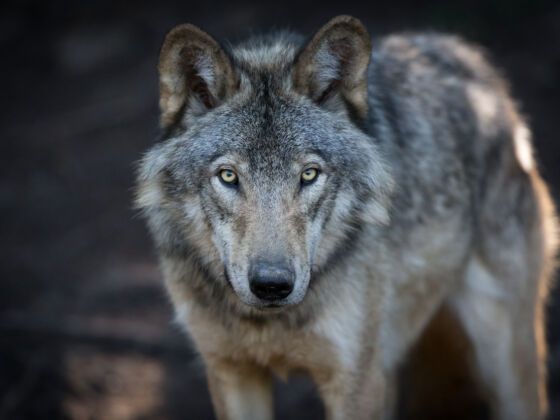ROLLING HILLS, GREEN FIELDS, and moorlands covered in heather and sheep constitute the British countryside. But the UK was once a very different place to what it is now — our rolling hills were once covered in rainforest, and wolves, lynx, bears and even elephants roamed the countryside. The British used to live in balance alongside top predators. Until they decided to hunt them all down, chop all the trees for building, and introduce grazing animals to the countryside that prevented any hope of flora growing back by itself.


What Britain Can Learn From the US About Repairing Its Ecosystem
Now, due to our country only having a woodland coverage of around 13%, compared to other European countries which have an average of 25-37%, our ecosystems are collapsing, towns flooding, and wildlife populations plummeting. The BBC reported that, “If Britain’s bare hills become cloaked with trees, and trees are also allowed to grow right up next to rivers, they will trap rainwater. This should mean a more steady flow of water into rivers, reducing the risk of both floods and droughts.”
Before the wolves were reintroduced to Yellowstone there were no predators in the park to hunt deer. This meant that the numbers of deer had increased and, despite human intervention to keep numbers down, managed to reduce much of the vegetation there to almost nothing. “But as soon as the wolves arrived, even though they were few in number, they started to have the most remarkable effects,” said Monbiot.
The deer became more cautious, staying away from open areas where they were easily hunted: valleys, gorges, banks of rivers. Because of this, these areas were able to regenerate. The trees grew where they hadn’t grown for almost a century and more than doubled their size in other areas of the park in just six years. Because of this, a whole collection of birds moved into Yellowstone, beavers returned, along with their dams which made homes for otters and ducks and reptiles.
Rabbit and mice populations rose because the wolves cut down the coyote population. This in turn encouraged weasels, hawks, badgers and foxes back to the park. Then came the eagles and the bears, who only accelerated the above reaction that the wolves began. In addition, the rivers of Yellowstone changed in response to the wolves because the regeneration of the shrubs and trees stabilised the banks meaning that collapse and erosion happened much less often, giving the rivers a more concrete course to follow.
Farm subsidy system
The British farm subsidy system is one that is both unfair and extremely damaging to the natural world. Rewilding Britain says: “Every year, taxpayers give farmers in this country over £3 billion. Most of this money takes the form of payments per hectare. The more land you own, the bigger your subsidy cheque. Some people are paid millions. Wildlife habitats are listed as ‘permanent ineligible features.’ This disqualifies the land from subsidies. So the system provides a powerful incentive to clear these habitats and keep the land bare, even if no food is provided.”
We’re a small overcrowded country
There is an overwhelming opinion in Britain that we are a small, overcrowded island with no space for wilderness and wildlife. The truth is, the Scottish Highlands alone are bigger than the whole of Slovenia; we have more than enough space to live alongside forests where wolves and lynx live.
The Infrastructure Act 2015
This new Act defines any species that have recently become extinct in the UK as non-native animals and potentially subject to control and destruction.
Public perception of predators in the wild
Many people are, understandably, nervous about the idea of lynx, wolves and even wild boar in the British countryside. They are perceived as dangerous to people and livestock.
You can read the full list of challenges facing the rewilding of Britain here.
Repairing the ecosystems that have been damaged for centuries so that nature and wildlife can thrive and our grandkids can grow up in a better, greener world than we did is the right thing to do. But it’s not all plain sailing, and we’re not all scientists and ecologists. But we can volunteer to help plant trees in our neighbourhoods and restore native forests and we can say goodbye to well-manicured lawns and rewild our gardens for birds and hedgehogs to make their homes in. One step at a time.